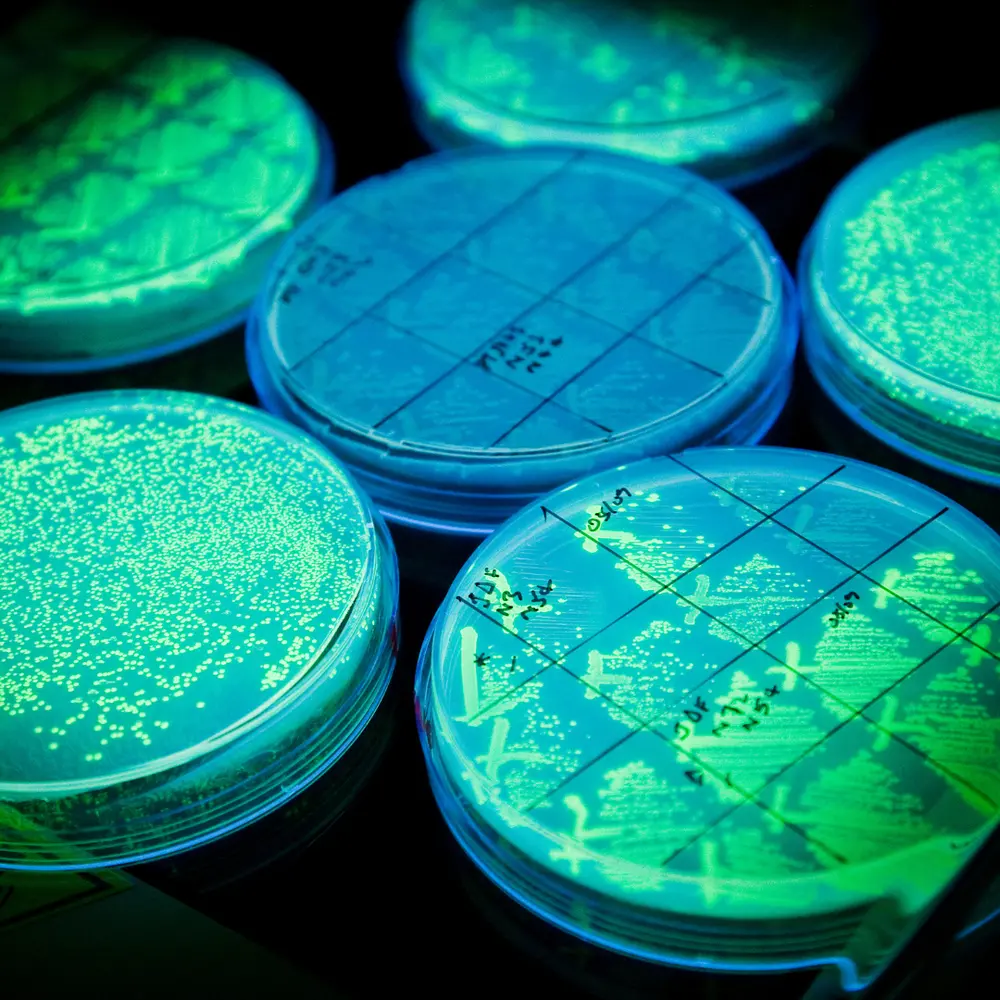
Building upon decades of research, scientists at the University of Illinois have determined Escherichia coli (E. coli) induces DNA repair enzymes to protect itself from low-grade hydrogen peroxide (H2O2) stress. Their collective findings, published recently in Molecular Microbiology, suggest the toxicity of low micromolar concentrations of H2O2 have spurred cells to evolve their various repair systems to survive.
“The main motivation of going about this research was that these low concentrations of peroxide were not considered to be enough to cause damage to the DNA, nor did we have good evidence that suggested that this concentration of peroxide can cause DNA damage,” first author Anshika Gupta, a PhD candidate in microbiology, explains. “But what we found was that when the cells are trying to grow in an environment which contains peroxide, they can accumulate enough DNA damage that they can be killed.”
Gupta is a member of microbiology professor Jim Imlay’s lab, which studies superoxide and hydrogen peroxide toxicity, asking fundamental questions about the damage the oxidants can inflict upon cells and how cells respond. The lab focuses its research on E. coli, which is considered a model organism with a well-understood metabolism.
The toxicity of hydrogen peroxide is exploited in various natural environments, including the human inflammatory response, and as a weapon by certain bacteria to gain a competitive advantage over others, according to Gupta. However, studying this toxicity has been challenging as the concentrations of peroxide are very difficult to control in the lab. Using E. coli as a model system, researchers can examine the impact of chronic low micromolar peroxide that can occur in higher organisms and their peroxide defense systems which are conserved across species.
Gupta is part of the latest chapter when it comes to understanding peroxide’s impact on E. coli. She says the story goes back to 1982 when Imlay’s own advisor, Stuart Linn, was studying DNA repair, and found that the repair enzyme exonuclease III was important for defending against peroxide stress. When Imlay joined Linn’s lab, the two wanted to learn whether repair genes were induced in response to peroxide stress. At the time, they were unable to find the answers they were searching for, and eventually moved on to other research.
Fast forward to 2016.
“When I joined the lab, our lab had done an RNA-sequencing with peroxide stressed cells, and what they found was that the exonuclease III (Exo III) was induced, I.e., the levels of Exo III were higher in peroxide stressed cells,” Gupta recalls. “That led to the research reviving this project.”

For Gupta and Imlay, the induction of exonuclease III, indicated that cells view hydrogen peroxide as a threat to DNA. That prompted them to hypothesize that low-micromolar cytoplasmic peroxide can seriously damage DNA. A publication from Imlay’s lab in 2005 also seemed to back up the new hypothesis, but the group later discovered their research materials were contaminated by an unknown amount of peroxides. Gupta and Imlay ventured forward with their hypothesis, theorizing that previous experiments may have been flawed. Using a refined assay created in Imlay’s lab in 2018, the group determined low-micromolar peroxide does indeed create enough DNA damage to spur Exo III into action to keep cells alive and growing. Gupta and Imlay found that exonuclease III wasn’t the only DNA repair gene induced to protect against peroxide stress; the SOS regulon played a role as well.
The SOS regulon is a general response system of cells to defend against any kind of DNA damage. Gupta says she and Imlay were fascinated when they observed low concentrations of peroxide inducing SOS. While they determined that one of the genes of the SOS regulon system, known as RecA, is crucial due to its ability to repair double strand breaks in DNA, they still want to learn what other genes in the system are important. Seeing the significance of exonuclease III prompted Gupta and Imlay to examine the roles of DNA glycosylases, enzymes that address damage specifically to DNA bases. They discovered endonuclease III, a key glycosylase, not only helped to keep cells alive after severe stress, but also helped cells continue growing during lengthy periods of moderate stress.
“That is indeed what we saw with Endo III, that the cells stopped growing for some time and then they were able to recover,” Gupta explains. “We think Endo III gets rid of these bulky lesions so that DNA replication can keep going on.”
Just like replication continues, so, too, does the story of Linn and Imlay’s research. As Gupta prepares to graduate this year, her chapter in the research will come to an end, and a new graduate student’s will soon begin.
“One of the major things we’re now interested in examining is which of the DNA repair genes are present in the cell that help with oxidative DNA repair,” she says. "Our research laid the groundwork for studying oxidative DNA repair in natural systems. We can now use this approach to learn about the role of other DNA repair genes in oxidative stress.”
